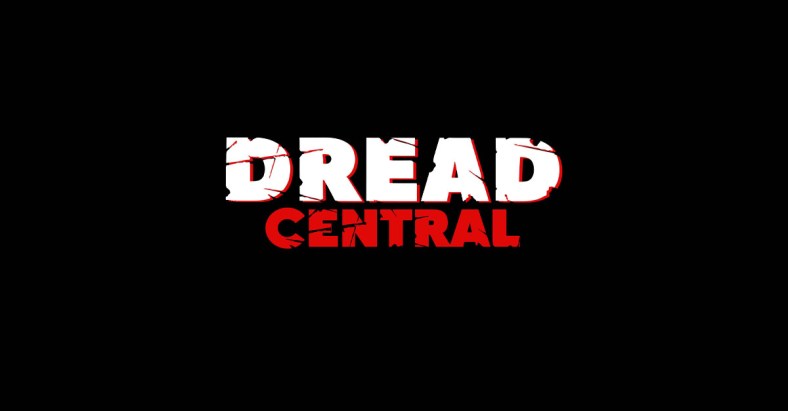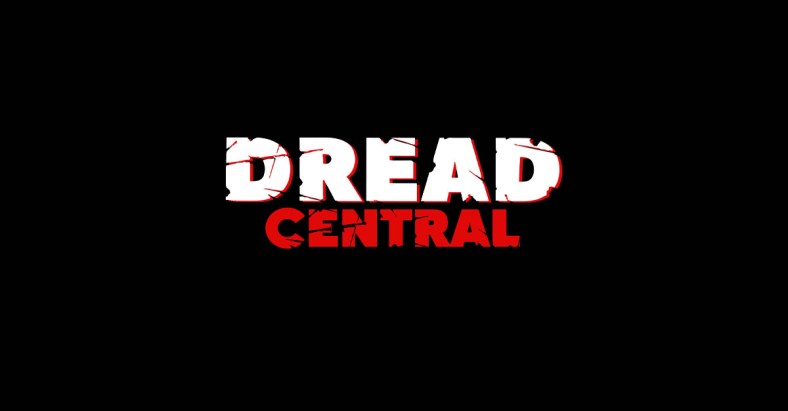DREAD ON DREAD: Jerry Smith Talks Horror with Marcos Codas

We’re starting something new here at Dread Central: As a way to better know the writers and creators you spend your time with here, we thought we’d launch a series where the Dread Central staff would interview each other. It’s a way to show the individuality and personal approach each person brings to the table. The lineup will change from week to week and it will be a lot of fun to see how each of our tastes are different.
Launching this column is a chat between Jerry Smith and Marcos Codas. Codas, who writes for both Dread Central and our sister site, DREAD-XP, hails from Paraguay and focuses on a variety of subjects, most notably his ongoing Hispanics in Games series, which highlights Latin developers and the rich stories they bring to the table. We hope you dig this series and how it highlights the personalities behind the articles you read. Enjoy!
Jerry Smith: Tell me about your introduction to horror.
Marcos Codas: Throughout the early 90s, I watched whatever I could find on TNT (cable) and whatever the Saint disguised as my video store clerk recommended. My brother also played a huge role in introducing me to horror and great music. He’s also responsible for recommending the film that changed my life forever: The Blair Witch Project. In a dingy Uruguayan theater (we were on vacation), my dad snored next to me while my mind got blown. I didn’t know it was fake (no internet for me back then). To this day, 21 years later, almost everything I create is informed by what that film did.
JS: Why do you think Horror is so important to cinema and its viewers?
MC: The great thing about that question is that it’s different for everyone. We all get different things from it, and from all art, really. For some, it may be a catharsis; for others: a way to face their fears. Others might just like the thrill of the emotional rollercoaster, and that is fine, too. Cinema, as a medium, benefits from this deep and largely heterogeneous experience, perhaps more so than with films which have a more uniform means of enjoyment. Speaking for myself, however, I can say without a shred of irony that horror matters because of the people I’ve met along the way. Exploring the nuances of horror has allowed me to make a career out of making new friends and creating new art. Be it writing about films, making my own films or comic books, or just being on friends’ podcasts to talk about films I love, horror has been one of the most human aspects of my life for decades. What could possibly be more important than that?
JS: Do you have three “desert island” horror films?
MC: Well, one has to be The Blair Witch Project. I never get tired of it, and it still terrifies me to this day. I think it has a lot to do with the fact that I know what the actors went through. A lot of their fear is real. Another one is The Exorcism of Emily Rose. I was raised catholic, so possession films really resonate with me, and this one is my favorite. The mix of body horror and commentary on the validity of exorcism really sets it apart. Finally, I’m taking my own film Kurusu Serapio. If I’m going to a deserted island, I want to at least remember what I was able to achieve before getting stranded there.



JS: Here’s a very typical question. Tell me about your dream dinner party. Three horror guests and you.
MC: It’s a funny thing, this one, because I actually prefer to dine with as few people as possible. I’m not a very social person, and the older I get, the less I want people to have over. I’m guessing these are characters rather than real people, which makes it even harder. Predictable, perhaps, but I would like to chat with Heather Donahue (The Blair Witch Project). Mostly because I really like her commitment to filmmaking. Two more, right? So, Lurch from The Addams Family, because I’d love to just have a relaxing dinner and someone to take care of the dishes and such while I wine and dine the guests. Finally, whatever Danny Trejo character you choose. Dude’s just cool as all hell.
JS: You proudly hail from Paraguay. What is the horror scene like there, both as a community and a place to make movies?
MC: It’s really kind of nonexistent, on both fronts. The first successful horror feature was only released last year. Film in general was quite delayed due to our history with dictatorships (we had one of the world’s worst for 35 years, until 1989). So, everything that has to do with art, we’re a bit behind.
We’re behind also on tolerance: as a deeply Catholic country, horror is mostly frowned upon to a degree that may cost you jobs or partners, should it be a part of who you are. So… it’s a challenge. I was always “the Satanic kid” growing up. I see small changes here and there, but mostly, it’s tough going.
Thankfully, younger people are normalizing “alternative” forms of art, like horror cinema. I do what I can to support such initiatives. But it’s certainly an uphill battle.
JS: Tell us about your film and comic, Kurusu Sarapio. The genesis of the project and what led to it.
MC: Oh, wow! Well, Kurusu Serapio is actually a real place, a shrine on the outskirts of my home town of Coronel Bogado, in Paraguay. It’s supposed to be home to an unrecognized Catholic saint called Serapio. Kurusu means “cross” in Guarani, the indigenous language of Paraguay (and one of the country’s two official languages, alongside Spanish).
I always wanted to make a horror film, and it felt right to use some stuff from my own life, rather than try and do an Anglo-Saxon kind of thing. There are all kinds of “favors” attributed to Serapio. However, midway through pre-production, I decided not to use the real story of the place, because it felt disrespectful to the people who go there to pray. So, I used the place as a geographic setting, but the story is all original.
It’s about a young witch who inherits a coven but is reluctant to take up the throne. She’s constantly bullied because she’s from a tiny rural area, but she continues to not want to use her powers for evil. She falls in love, and… well, a broken heart is one hell of a motivator.
Geography aside, the story of Camila (the witch) is heavily inspired by my own life. I always joke that my way of dealing with having been bullied as a kid is to make myself into an all-powerful teen witch on film (and comic book).
It’s the first-ever transmedia franchise out of Paraguay, so we’re hoping to lay the groundwork for more people to express themselves in whatever way they choose.
As you can tell, I’m a proud dad to Kurusu Serapio.


You’ve been on my podcast, The Pod and the Pendulum, to chat The Blair Witch Project. The conversation lasted a wild three hours. Let’s talk about your background and love for BWP and also your affinity for the found footage approach in general.
MC: Well, I mentioned it up above, but it was my brother who told me to go see it. When I watched it in 1999, I thought it was real. I was, as the kids say, shook. Even after finding out that it wasn’t real, it still scared me. In fact, the more I know about it, the more I admire it. The way the film was made is nothing short of a masterclass. I don’t think a film could be made like that today.
The sense of realism and immediacy which found footage creates is what gets me. I like feeling as if I’m in the film, and very little accomplishes that as effectively as a found footage film. I understand why some people may not like the technique, but to me, it’s no different than playing a first-person video game. It’s art onto which you can project yourself.
The more the gap between reality and fiction is bridged, the more I’m into it. And you just cannot get any closer to film than found footage.
JS: Let’s close this out with your favorite horror comfort watches. Do you have films that make you feel good?
MC: I like to watch the early stuff: Hammer films, anything with even a hint of German expressionism… and Plan 9 From Outer Space. I could listen to “The Amazing” Criswell for hours on end.
Categorized:Editorials Interviews News

